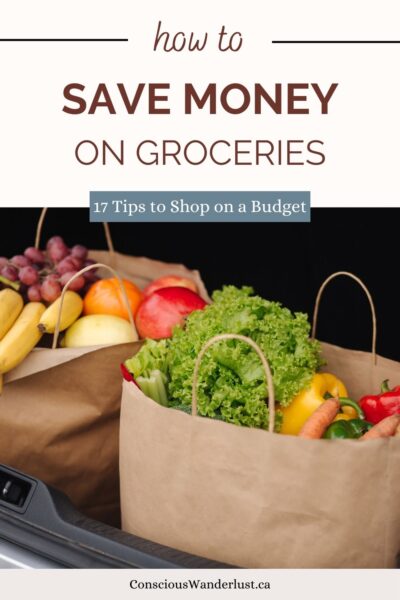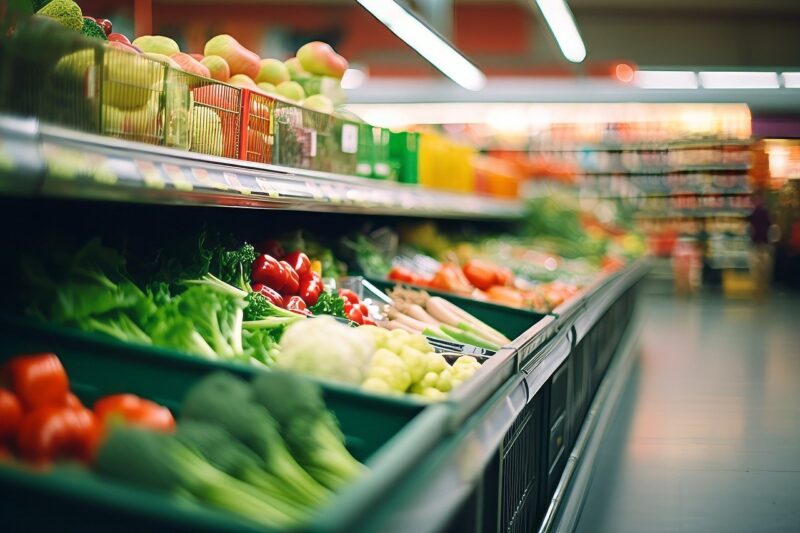The idea that you can save money on groceries seems less and less releastic these days. The price you pay for a sale item now is the regular price you paid five years ago. There is no denying that higher grocery prices are here to stay. But that doesn’t mean you can’t find savings and shop on a budget.
Shopping on a budget is the norm for us. It’s how we were able to afford long-term travel, buy a house within three years of returning to Canada, and travel overseas for trips and vacations now.
Finding deals has become somewhat of a sport for us. It gives me a thrill. A sense of excitement when I find something on sale. I know exactly what is considered a sale for the regular items we buy. Because of this I know when a “sale” is not really a good deal at all.
The following are the actual tips and tricks we use to save on groceries and reduce our weekly spend. We don’t follow all of them all the time, nor do we expect you to. But we try to adhere to them as closely as possible. Following these money saving tips when buying groceries helps us keep within budget and combat some of the effects of inflation.
Has all this talk of grocery savings got you hungry for more budget tips? Check out our Budget Travel Tips: The Complete Simple Guide for travel-related savings.
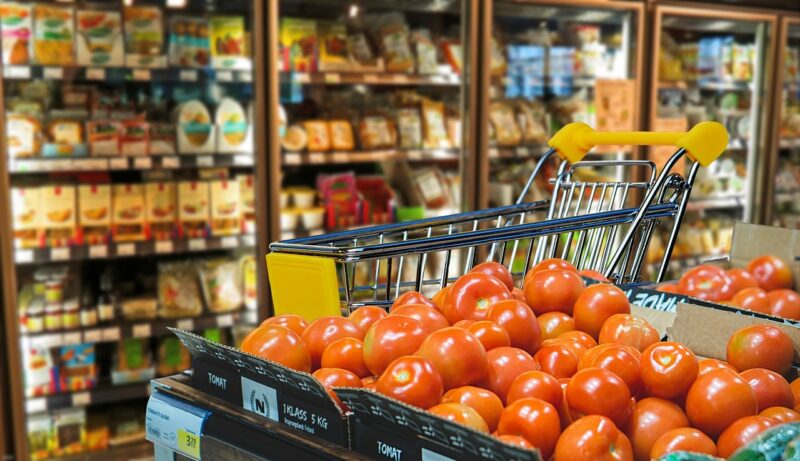
How to Budget Shop: 17 Ways to Save Money on Groceries
1. Buy on Sale
This one is obvious, but can often be overlooked. It ties into some of the other tips I mention below such as getting creative with your meals and buying in bulk.
Although not always possible, especially if you have children or others with specific needs, it’s incredibly helpful. Even more so if you can buy multiples of the item. You may take a hit on total price buying multiples, but in the long run you will come out ahead.
You can capitalize on this even more by taking advantage of customer appreciation days. Some grocery stores, such as Save-On-Foods, offer an additional 15% off on the first Tuesday of every month. We don’t shop at Save-On-Foods often because they do tend to be on the higher end of grocery prices overall. But if this is your favorite store or your only option, buying the bulk of your groceries on the first Tuesday of the month will result in savings for you.
2. Buy in Bulk
I recently bought an 18kg bag of rice for $30. You may be thinking this is an excessive amount of rice for a two-person household. And maybe it is. But we go through a lot of rice, have the space for it, and can afford it.
Buying this giant bag of rice works out to be just over $0.16 per 100g. Try to find rice at a cheaper price. (No really, try. And tell me where. I want to save more money). Buying in bulk helps us save money on groceries in the long run.
This brings me to another very important tip:
- Pay attention to the price per 100g or price per 100ml, NOT the total price.
An item may seem to be cheap. It may seem to be a good deal. But when you compare the per gram price to a more expensive item, you may find it’s not a good deal at all.
The total price does not tell you the entire story. The price per 100g, 100ml, or unit is the better indicator of real price.
Another great tip relating to buying in bulk is to go in on with a friend, family member, or neighbor. Splitting bulk items enables everyone to reap the grocery savings.
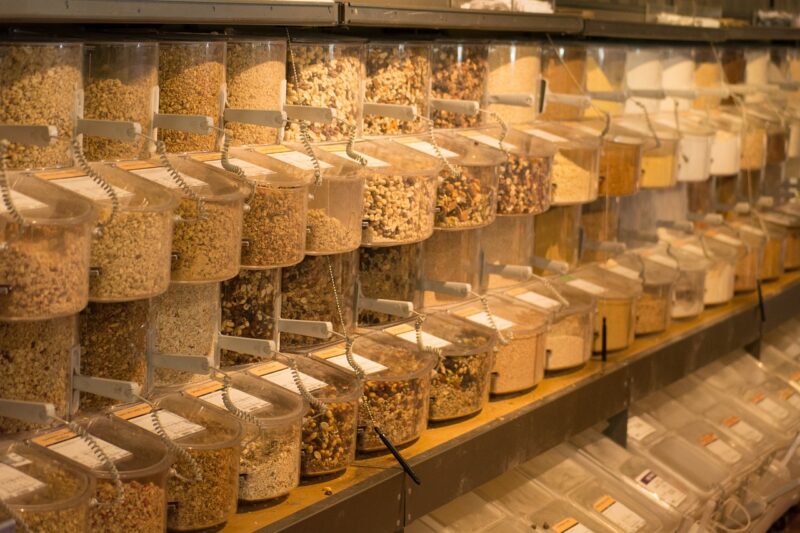
3. Shop at Bulk Refill Stores
This ties in perfectly with the first two tips – buy on sale, and buy in bulk. And it has an added bonus of sustainability.
Bulk refill stores enable you to bring in your own clean, empty jars and fill them with the products of your choice. Some refill stores sell jars for you to purchase and use. Others have donated ones you can keep and use for free. They all let you take in whatever jar or container you have, as long as it’s clean.
Some stores, such as Bulk Barn, offer an additional 15% off regular priced items when you use your own refillable jars on Sundays. They also regularly have sales, promotions, and coupons for money off of a certain dollar spend.
Refill stores are not limited only to save money on groceries. There are zero waste refill stores for almost all your household and lifestyle products. One of our favorite local zero-waste stores is Re:Plenish. We visit them for toiletries and cleaning supplies. They offer free shipping across Canada with orders over $100.
4. Buy Close to “Best Before” or “Use By” Dates
We regularly find savings purchasing discounted items nearing their “best before” or “use by” dates. On average these items will be discounted anywhere from 30% to 75% off their regular or sale price.
Don’t let the “best before” aspect scare you. Depending on the product, the item may last long after this date, especially if unopened. There may be a slight loss in nutritional value, freshness, or taste. We have been shopping off the discounted “best before” items for years and very rarely have had a bad experience.
Depending on the item, you can also stockpile these (buy in bulk). As long as you use them right away or freeze them, they may be just as good as if you had bought them well before their expiration date.
Our favorite tool for finding these discounted items is by using the Flashfood app. Flashfood partners with retailers to provide savings on food items that are nearing their best before date at grocery stores across Canada and the U.S. It’s not only providing savings to you, but helping prevent food waste.
The majority of sales in the Flashfood app seem to be around 50% off, but we have seen savings of up to 90%. I cannot recommend this app enough. It has helped us save money on groceries week on week.
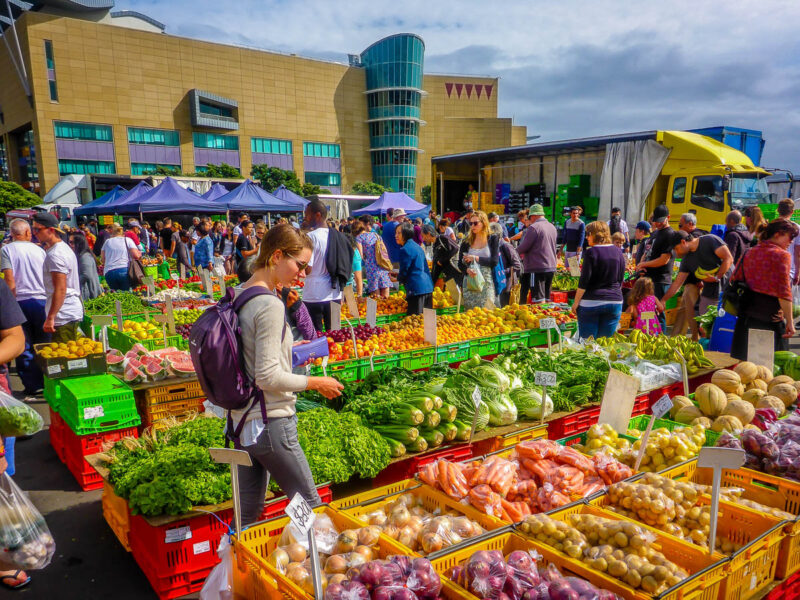
5. Compare Prices
This tip can be a bit time consuming but does make a big difference. Prices can vary greatly from store to store and week to week. If you are able to shop around and pay attention to prices, you can reap savings benefits.
There are a few different methods to compare prices. The most cumbersome one is by visiting all the different stores you have access to. Downsides to this are time it takes, transportation costs (petrol, taxi, bus), and potentially needing to double back if an earlier store has better prices. I don’t necessarily recommend this one unless you are someone who likes going to a lot of stores.
Another option is to check and compare flyers, either online or physical mailouts. I prefer checking online because you have access to more information. And you can easily have multiple tabs open searching for different items. Remember to pay attention to the price per unit and not the total price!
As with most things these days, there is an app for this! The Flipp app claims it is a “one-stop marketplace for savings and deals”. Within the app you are able to browse weekly digital flyers and search for specific items. As of the time of writing, not every store near me is available on Flipp but it still provides a solid catalog of options.
Once you’ve compared prices, you may be able to take advantage of Price Match programs. Certain stores such as Loblaws, Walmart, London Drugs, and Save-On-Foods, offer price matching on items. Some stores will even offer a 10% discount on top of the price match.
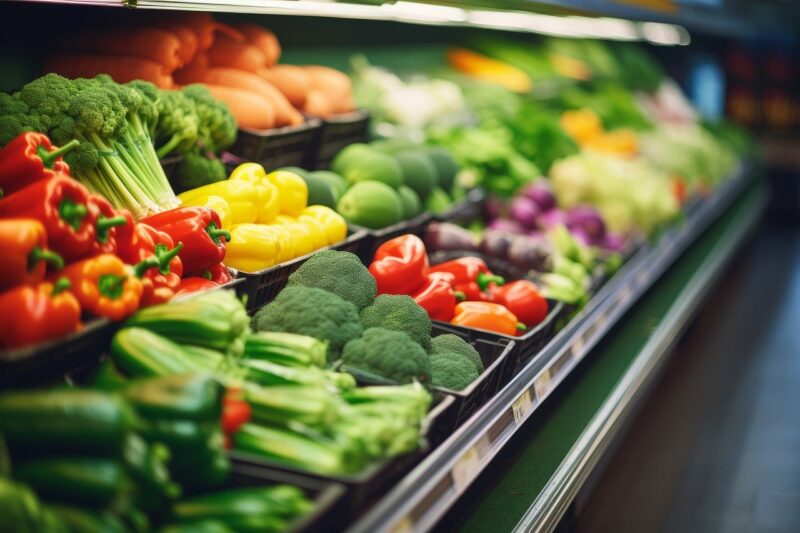
6. Buy Seasonally
Buying produce in season is a great way to potentially save money and try new things. It’s an opportunity to experience produce in their freshest and best tasting state. As opposed to items that have been kept in temperature controlled storage.
In addition to being more fresh and better tasting, in-season produce tends to be cheaper than out-of-season produce.
For a helpful breakdown of what’s in season in Canada, check here.
7. Buy “Imperfect” or “Ugly” Produce
For whatever reason, we as a society have decided to place looks above most all else. Even when it comes to produce. If it’s too big, too small, is lumpy, uneven, or any number of things, it’s considered not as good.
An oddly shaped apple tastes the same and has the same nutritional value as a “perfect” apple, but few people want the weird one.
Because of this, less than desirable looking produce may never even reach your regular store. They are often discarded ahead of time, contributing to food waste. However, some stores will offer “ugly” produce at a discounted price.

8. Buy Generic or Store Brands
I love generic and store brands. Given the choice between the brand-name and a generic one, I will almost always choose the generic option. They generally taste just as good, are similar quality, and contain the same ingredients. But at a much cheaper price.
That’s not to say all generic brands are created equal. There may be slight quality or taste differences. Some of it may simply come down to personal preference. However, I think a big part of it is perception. Keeping up with the Joneses. Wanting to be part of the elite club who can afford the brand-name goods.
I don’t like any of that. Give me generic, basic, store branded goods any day of the week.
8a. Avoid Items at Eye-Level
Another tip when shopping is to avoid items at eye level. This is premium real estate in a grocery store. It’s where you find the most eye-catching, brand-name, expensive items. Look above and below and you will find much cheaper, but just as good, lesser known items.
9. Buy Locally
Farmers markets and local stores or specialty stores aren’t always cheaper. However, there can be some great deals and unique items you may not find elsewhere.
You may find deals at farmers markets by shopping closer to the end of the day or buying multiples of items.
More importantly, buying local supports local farmers, producers, creators, and businesses. And it helps you build connections within your local community.

10. Use Loyalty Programs
No matter where you shop you are likely to find a loyalty program that you can work to your advantage. This may be in the form of extra discounts, points accumulations, discounted days, and more.
In order to participate in the loyalty programs you will need to scan a physical or digital card or use a linked credit card. The terms and conditions differ among the different programs.
The following is a list of some of the ones we use to save money on groceries:
- Loblaws (Superstore, No Frills, Shoppers, and more): PC Optimum
- Save-On-Foods: More Rewards
- Sobeys, Safeway and more: Scene Card
- Rexall and Well.ca: Be Well
11. Do Grocery Pickup
Since you’ve already compared prices online, you may as well complete your grocery order online too. Maybe.
There are pros and cons to doing grocery pickup.
Pros:
- Only buy what you need, therefore prevent overspending
- Save time and effort by shopping in the comfort of your home
- Convenience
Cons:
- Service/pick-up fees
- You may miss in-store deals
We do a mix of pickup and in-store shopping. With our current retailer of choice, the pickup fee is only $1 so it’s worth it for the convenience.
However, what I like about in-store shopping is the opportunity to walk the aisles and scope out deals that may not be advertised. This can be both good and bad. It’s good if you only stick to what you would normally buy and use. It’s bad if you’re the type of person who sees a good deal and has to have it, even if it’s not something you actually need.
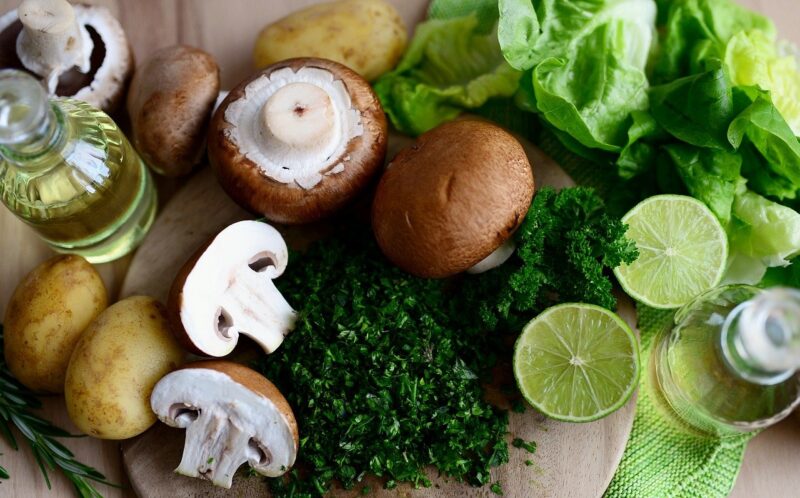
12. Cook Your Own Food
Cooking from scratch can be time consuming but is generally better for you both in terms of the impact to your wallet and your overall health.
Convenience foods generally come at a high cost. Whole, natural ingredients generally do not. Not only are you saving money, but you’re also getting better quality food. Quality ingredients with fewer or no preservatives, fillers, chemicals, or processing.
To make things easier on yourself you can batch cook, portion, and freeze meals for future you. Using a slow cooker, instant pot, or one pan/pot meals is also a great time saver.
We cook the majority of our meals from scratch. This includes our three main meals and snacks such as baked goods or granola bars. Lately, we’ve also started making our own hummuses, dips, dressings, sauces, and oat milk.
I should note it’s not always more cost effective to make things yourself. If you have a complicated recipe requiring ingredients you don’t use often and may not use again, it might be best to buy the pre-packaged item instead.
However, if you shop at refill stores you are able to choose the exact quantity needed. Nothing more, nothing less. Even so, buying the raw ingredients may still end up costing you more than the pre-packaged item.
13. Meal Plan
Meal planning is a great way to save you time and money. It ensures you buy exactly what you need. You’ll know what you have already and what you need to buy. Including the quantities of everything. Sticking to your plan prevents you from buying unnecessary or unexpected items.
Meal planning ties in nicely with the next tip to save money on groceries.
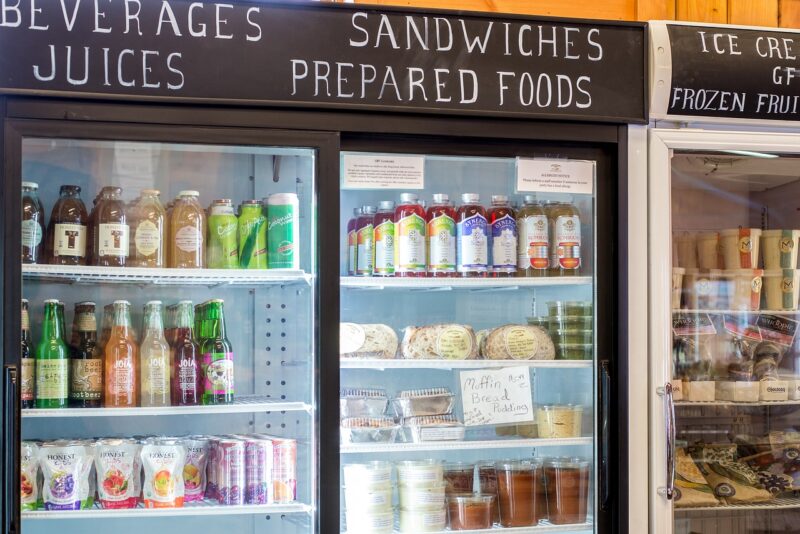
14. Make a Grocery List and Stick To It
Say no to impulse buys. Resist the urge to buy the thing on sale (unless, as mentioned previously, it’s an item you regularly use and need).
By sticking to your grocery list you will not only save money on groceries, but save time and energy. If you know the layout of your local grocery store you can be in and out in record time.
Make sure to put your blinders on when at the till. That’s often where the majority of impulse convenience purchases come from. If it’s not on your list, you do not need it!
15. Do Not Shop While Hungry
We’ve all done this. We get to the grocery store. Our stomach starts to grumble. Oooh those chips look good. A complete taco meal kit sounds delicious. Chocolate bar for dessert? Count me in.
No.
Avoid shopping with your stomach rather than your head. You rarely make good decisions when you’re hungry. Or at least I don’t. If I’m hungry while grocery shopping I want to eat everything. Things I don’t normally eat sound appealing.
Shopping while hungry is a recipe for disaster. Have a snack before you go. Or better yet, make yourself a snack at home using food you already have and place a grocery pickup order. Win win win.
16. Use Everything You Buy
This is a good tip for all consumer goods: Use what you have before buying new.
Eat leftovers. Repurpose leftovers into a new meal. Freeze food if you don’t think you will eat it before it starts going bad. You can gift food. Or throw a “everything but kitchen sink leftovers” dinner party and invite friends over.
Lastly, compost whatever you absolutely cannot use. For us this is generally limited to the inedible portions of produce.
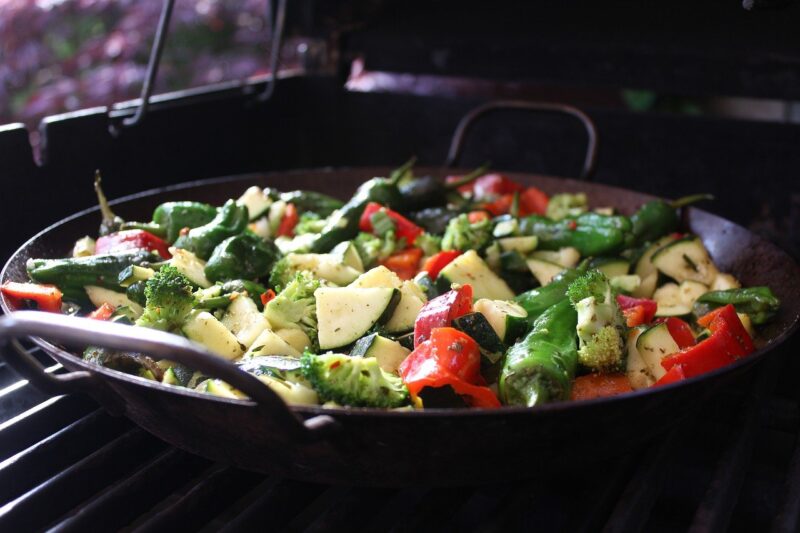
17. Get Creative
This one is a struggle for some, Luke included. It can be hard to think of new and exciting meals to have. Or different ways to use up the same ingredients. Trying new recipes can seem overwhelming.
I’ve found that once you start experimenting with ingredients, it’s hard to stop! I rarely stick to a recipe when I cook. Nothing against those recipe creations. It’s more that if I don’t have one or two specific ingredients, I am not going to let that stop me from trying the recipe.
Outside of recipes I like to improvise and make my own creation. This may be daunting and takes time and practice to get comfortable with. But now some of our favorite meals are “Erin specials” – ones I made up on the spot. (And will likely never be able to repeat.)
You can also challenge the idea of what’s appropriate for dinner or for a specific dish. Just because something has been done one way in the past, doesn’t mean it has to continue to be that way. Try unique combinations. Eat breakfast for dinner.
Another great money saving tip is to use substitutions. For example, a lot of recipes we use call for cashews or pine nuts. Those are both expensive nuts. The overall impact of them is a creamy, nutty taste and texture. But since we are all about saving money, we use sunflower seeds instead. Sunflower seeds give a similar taste and texture at a fraction of the price.
Recently I made soybean hummus. This wasn’t necessarily because dried soybeans are cheaper than dried chickpeas. It was because we had soybeans in the pantry that I wanted to use up. The result was a slightly more nutty, earthy, flavored hummus that we have been enjoying since.
Trying to save money on groceries requires a bit of planning, time, and effort but really pays off in the end. Maybe you can take those additional savings and put them towards a travel adventure? We have just the resource to help you plan your next trip: Planning the Perfect Travel Itinerary – Trip Planning Resources.
